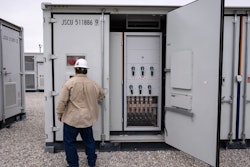
When the supply chain has ample inventory, it’s not as crucial to know the exact location and status of all products because there is a buffer. But in the past year, as the world grappled with the pandemic and other surprise disruptions, that buffer disappeared. Knowing exactly what you have, where it is, and how long it’ll take to get it to where you need it, became a critical necessity.
As Joachim Schaut, Vice President of Intercontinental Supply Chain Solutions for leading global logistics provider DB Schenker, can attest, supply chains were already being pushed to their limits with the unexpected challenges of COVID-19 and resulting increases in consumer demand. “It was already a very tense situation in the ocean and freight market,” he says. “Airfreight capacity was already an issue, with so many passenger planes grounded. Almost every ship on the planet was deployed, and there was already a container shortage in place.”
Just when you thought it couldn’t get worse for logistics, on March 23, one of the world’s largest container ships ran aground, blocking the Suez Canal and forcing the logistics industry to face an unprecedented challenge on top of the strain from the pandemic and global dynamics. “The Suez blockage added an additional massive disruption, with so much global trade going through the canal,” Schaut says. “Ships had to detour around Africa, others were stuck for a week in a traffic jam. All of this sucked up the logistics industry’s capacities, of both space and equipment.”
The silver lining of this chaos has been the forced lessons on how to manage with lower inventory levels. In this dynamic, Schaut says it is critical for companies to manage their supply with a focus on full visibility.
To help them navigate the new realities of the industry, DB Schenker turned to 15-year technology partner Infor, a leader in business cloud software specialized by industry. By utilizing Infor solutions, DB Schenker was able to have instant visibility, from the container level down to the inventory level, of a single product. This degree of granularity meant arrival times for cargo could be accurately forecasted, enabling DB Schenker to help its customers effectively align their distribution channels to navigate around snags and better meet customer needs.
Customers using Infor technology have instant visibility into what is happening. During the canal blockage, they were able to see on a map, connected in real time, what containers they had on their way to Suez, which ones were stuck in the traffic jam, and which ones were going around Africa. “Logistics managers could just open up the application, refresh it, and see them on a map,” says Schaut. “Companies that didn’t go digital had to call their freight forwarders, find out about their shipments, and if there were any changes the next day, they had to do the exercise all over again. From an efficiency point of view, the difference is massive. It didn’t help to unblock the Suez Canal any earlier, but at least if you had more information, you knew where your containers were, and you could calculate the delay.”
As demand has outpaced supply, there has been a major shift of power in the logistics industry, where the balance has tilted to the freight companies. “If you look at the past 20 years, shipping was characterized by overcapacity. It was a procurement game, where companies would go out to tender, look at the different bids, and save money by choosing the cheapest option. Everyone had more capacity than demand back then,” says Schaut. “Now it’s still about controlling costs, but it’s end-to-end costs, it’s a matter of efficiency, not just finding the cheapest suppliers. You want to look at working capital reduction and time to market. When you have better visibility, you can look at alternatives.”
Furthermore, Schaut recommends that companies need to be more steady and reliable clients for their shipping partners to get the most advantageous terms. He says if a company wants its cargo moving regularly, it needs to supply a steady stream of products to its ships, avoiding fluctuations that make its business less reliable. “You need to change your planning approach, to get better forecasts and better visibility before that cargo is loaded,” says Schaut. “For all this, you need technology.”
Emphasizing DB Schenker’s commitment to a digital leadership, Schaut says, “We now have an unprecedented window into processes that make up the complete end-to-end journey for our global logistics customers and can offer reliable intelligence for the arrival of goods.” He goes on to urge companies to make the investment in technology to help them traverse the growing demands of a global supply chain. “We need to balance complexity without putting too much investment in our own teams, because a lot of companies can’t afford that. It’s through technology that we need to make these efficiency gains. In terms of the supply chain and production, there are a lot of advantages in global trade. You just can’t manage things with excel files anymore.”























